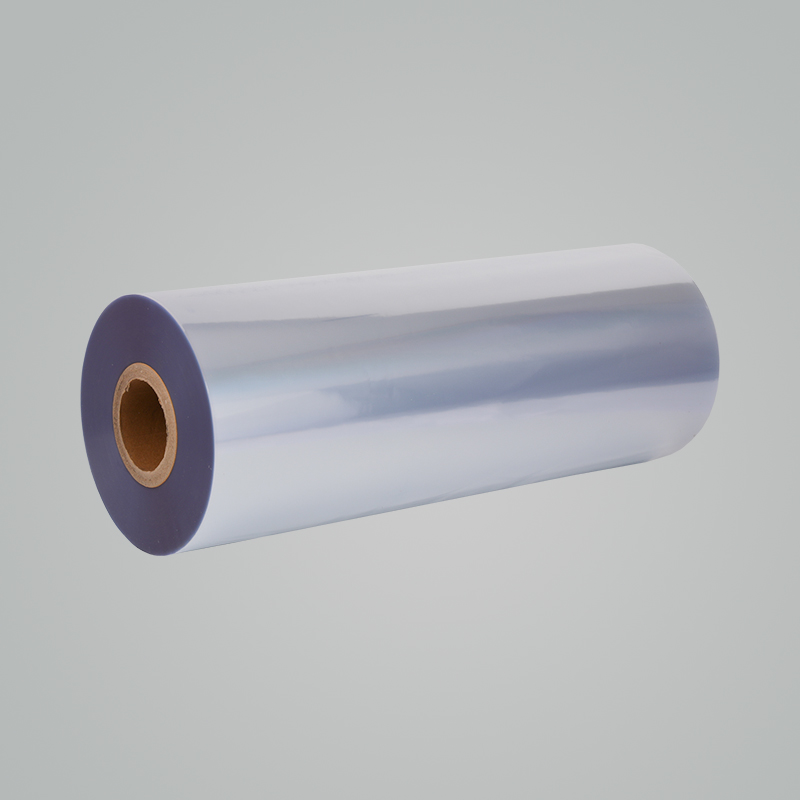Cast PVC Shrink Film
Material:PVC Shrink Film
The moisture resistance and ability of cast PVC shrink film to prevent freezer burn in food packaging are due to several important material properties and mechanisms. Freezer burn occurs when moisture from the food surface evaporates and then forms ice crystals on the surface, leading to dehydration, oxidation, and a decrease in food quality. Cast PVC shrink film helps to prevent this process through a combination of barrier properties, film structure, and packaging techniques. Here’s how it works:
Low Moisture Vapor Transmission Rate (MVTR)
PVC shrink film has a low moisture vapor transmission rate (MVTR), meaning it is effective at preventing moisture from escaping the food and reducing the potential for the formation of ice crystals. The film acts as a barrier that significantly reduces the amount of water vapor that can pass through, which is the primary cause of freezer burn.
The low MVTR is achieved because of the dense molecular structure of the PVC film, which is not easily penetrated by water molecules. This results in a highly moisture-resistant packaging solution.
Tight Shrink Fit and Seal Integrity
When cast PVC shrink film is applied to a food item, it is heated to a temperature that causes the film to shrink tightly around the product. This tight fit minimizes the amount of air surrounding the food, thus reducing the potential for moisture evaporation.
The film’s sealed edges also help to create an airtight environment that traps moisture inside the packaging, reducing the risk of moisture loss from the food and the formation of ice crystals on the surface.
The tight shrinkage of the film ensures that there are no gaps where air can penetrate, which is critical in protecting the product from the effects of freezer burn.
Prevention of Oxygen Exposure
Oxygen exposure is one of the key contributors to freezer burn, as it can lead to oxidation of fats, proteins, and other sensitive components in the food. While PVC shrink film primarily prevents moisture loss, it also provides a certain degree of oxygen barrier protection.
The low permeability to gases of cast PVC shrink film helps reduce the amount of oxygen that reaches the food, limiting the oxidation processes that can degrade food quality and contribute to freezer burn. This is particularly important for products like meat and poultry that are highly susceptible to oxidative damage.
Plasticizer Content for Flexibility
The plasticizers used in cast PVC shrink film contribute to its flexibility, allowing the film to shrink without becoming brittle at low temperatures. This flexibility helps the film conform tightly to the contours of the product, reducing the potential for air pockets and moisture escape.
The plasticizers also help maintain the film's moisture resistance over time by preventing it from becoming rigid and cracking, which could expose the food to external air and moisture.

Prevention of Condensation
One of the key factors in freezer burn is the formation of condensation inside the packaging when food is placed into a freezing environment. Cast PVC shrink film helps to prevent condensation by providing an airtight seal that reduces the likelihood of moisture from the outside air coming into contact with the food.
In addition, PVC film can absorb some moisture, preventing it from settling on the food, which would otherwise freeze and lead to crystal formation and subsequent freezer burn.
Smooth and Dense Film Surface
The smooth surface of cast PVC shrink film also contributes to its moisture resistance. The dense, non-porous structure of the film prevents moisture from penetrating the film or escaping from the food, which could lead to dehydration and freezer burn.
This smooth surface is particularly effective at maintaining the visual appearance of the food and preventing the development of surface defects, such as ice crystals or frost.
Thermal and Mechanical Performance at Low Temperatures
Cast PVC shrink film retains its mechanical integrity and flexibility even at low temperatures. Many other films, especially those without added plasticizers or special additives, can become brittle and crack when exposed to freezing conditions. This brittleness can lead to gaps in the seal, allowing moisture and air to infiltrate.
The PVC shrink film's ability to maintain its form and flexibility at temperatures as low as -20°F (-29°C) ensures that the food remains properly sealed and protected from moisture loss and freezer burn.
Film Thickness and Barrier Properties
The thickness of cast PVC shrink film can vary depending on the specific requirements of the product. Thicker films tend to offer better protection against moisture loss and freezer burn, as they provide a stronger barrier to both moisture and oxygen.
For products that are particularly sensitive to freezer burn, multi-layered or thicker films may be used to enhance the moisture barrier properties, ensuring a longer shelf life and better quality preservation.